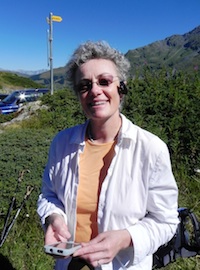Financial analysts' blogs are not on my list of top reads this summer so I was surprised to find myself reading this fresh post on SeekingAlpha. It is a thorough research study on the potential revenue to be generated from Nokia's patent portfolio. After describing how much Nokia has invested in R&D in the past 10+ years, the headline "Location Based Mapping Patents Are Hidden Jewel of Nokia Patent Portfolio" appears and the analyst jumped directly to the topic of indoor positioning.
Indoor positioning has been an increasingly important topic for my research. I'm not alone in discovering that there will be a large value stream to come on the basis of positioning users more accurately indoor (as well as outdoor) so the potential for innovation in this space is going to be huge. Well, that is if there are not already patents protecting such innovations and their future use.
I found this post on Forbes to shed a lot of insights into the thoughts I had when I saw the Nokia and Groupon deal, creating Groupon Now! Of course, the Forbes post is more in depth and valuable. Here are a few points that this blogger extracted from the Grizzly Analytics report published in December 2011:
Of the five leading companies (Google, Apple, Microsoft, Nokia and RIM), Krulwich sees Microsoft and Nokia as the most likely to challenge Google in indoor positioning. He expects Microsoft and Nokia to launch a service sometime in 2012, perhaps tagged to Microsoft’s “Tango” Windows Phone update. Both companies have significant experience in indoor positioning. Microsoft has researched how to determine location using special radio beacons as well as by analyzing Wi-Fi signal strength. It has also experimented with what Krulwich calls movement tracking. That involves tracking a device as it moves away from a known location, such as a door to a building (which can be pinpointed via GPS because it is outdoors).
Beyond its research, Microsoft holds granted patents in indoor positioning. Krulwich counted at least five Microsoft patents related to determining phone location using wireless access points, radio beacons, device movements and other radio signals.
Nokia’s indoor positioning work is equally sophisticated with patents going back to at least 2006. In September 2006, Nokia filed a patent on “Direction of Arrival” detection. That strategy leverages ultra-wideband (UWB) radio technology to estimate location. In fall 2007, Nokia also filed three patents related to determining location via Wi-Fi signal strength.
Although Krulwich's prediction that Microsoft and Nokia would launch an indoor positioning service in 2012 has not yet been disproven, it's clear that Google has continued to make more noise around indoor than any of the other potential leaders. If Microsoft and Nokia are going to be battling out the indoor future with the likes of Apple, Google/Motorola, Qualcomm, Research in Motion, among others who have also written or read the writing on the walls, Microsoft and Nokia will need to acquire or partner with those who have a much higher rate of success in the mobile market.
Where does all this interest in the indoor mobile positioning space lead us? To finding and working with small innovative companies that have the potential to either implement well on the patents of others, or to generate new intellectual property for indoor positioning and, in either case, be acquired by one of the five major companies leading users of mobile services indoors.
Who are you and how can I help?




